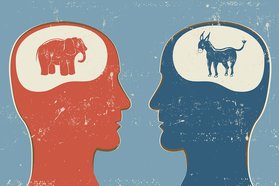|
Reposting a blog about my book Creating Matters: Reflections on Art, Business, and Life (so far) originally posted here by Seton Catholic Schools' Chief Academic Officer William H. Hughes Ph.D. Anderson William’s book Creating Matters is gaining traction. We are using Creating Matters as a guide in the development of the Seton Catholic Schools Academic Team.
Creating Matters is helping us to think differently about our work as educators: our priorities, relationships, and what we are creating – in this case high performing schools and effective leaders. The world has always belonged to learners. Creating, building creative relationships, and purposefully reflecting can generate continuous learning and help us think differently about transforming a school, a business or one’s life. We have to think differently or we won’t grow and understand the changing world around us. Lifelong learning opens our minds exposes us to new vantage points, more things to see, to touch, to explore. Lifelong learning is hard work. It is not for everyone, but for those who commit, the joy and engagement makes one’s life better. To sustain lifelong learning, we must depend on our creativity. Creativity defines the nature of our relationships. It puts our learning into action. It is a philosophy of how we see the world and our role in it. Creativity will determine whether our efforts will ultimately create impact, whether we transform schools and build new leaders, and pass that work to a new generation. Creating anything new starts with asking questions: questioning the perceptions of the others, the sources of accepted fact; the thinking that verified it; and how we rethink the work of transforming schools from scratch. Too many schools and districts are great examples of organizations that have failed over time to recreate themselves while convincing themselves they are better than the facts show. In the case of Seton Catholic Schools, Creating Matters guides us in creating with a focus on what kids should be learning and becoming: creative, lifelong learners who are ready to change and engage in their community. Isn’t that what schools are charged with doing? Schools in transformation must ask this question: If we are starting from scratch and wanted the kids to become lifelong learners, is what we are doing now what we would design from scratch? Answering this question and wrestling with its implications require us to be more creative, to have stronger relationships that survive the necessary arguments and conflicts, and to build our work on a model of creating rather than constantly fixing. At Seton, we are seeing some bright spots in teaching and learning along with better student engagement with faculty who are starting from scratch. We are collectively creating and questioning our own assumptions, learning new skills and creating lifelong learning across our school community. When we bring this shared purpose and focus to our classrooms and students, the transformation is palpable. We are building a community of students, faculty and staff who are committing to lifelong learning and to creating the kinds of schools where that commitment is put into practice. Read Creating Matters and then put it into practice. This isn’t about “seven easy steps to a better you” or some other seemingly simple approach to creativity or leadership. It’s about renewing your awareness of who you are and what you can do when you commit to creating what matters in school, business, or most importantly, life.
0 Comments
 It has to be created. We can’t fix ourselves to a better future. We have to generate new thinking and new systems, formal and informal, that will drive better process. In my work with youth and in education, people talked a lot about dropout prevention, drug and alcohol prevention, violence prevention and the like. I countered with the obvious, if silly sounding, declaration: we will never prevent young people to success. Prevention in these traditional forms is all about focusing on narrow problem sets that we arbitrarily isolate, even as many of the same youth traverse them all. To help them define and find success, we have to create something new, something better, within young people and around them. Similarly, preventing bad policy, while certainly critical in the short term, won’t build a healthy democracy. Our protests and actions in the streets, while a strong and important exhibition of democracy, could easily be cast more accurately as the prevention of tyranny. Clearly, we need to stay activated, but we also need to make sure we plan and create and build more democratic systems beyond the resistance. A purely problem-solving orientation, whether called prevention or resistance or anything else, traps us in the premise and circumstance of the problem. Solving one problem gets us to the next, which is probably just an iteration of that which we have already solved. If we want a different future, we must create a different future. We must rethink and reestablish the norms, relationships, and basic political foundations that keep producing the same old problems. Otherwise, we will just keep fixing things, stay really busy, get burnt out, and never really get anywhere. (Check out the work of Robert Fritz for more on this train of thought.) For starters, for democracy:
We can’t all argue in front of the Supreme Court or create our own legislation. All of us won’t run for office. But, every one of us can sign someone up to vote. We can vote ourselves. We can volunteer for a campaign, or serve on a board. Every one of us can write our elected officials, remind them that we are paying attention and that our voice matters. We can write op-eds or blogs or something more thoughtful than Tweets and Facebook rants. Per President Obama’s urging, we can have actual conversations with people who don’t agree with us. Every one of us can be more democratic in our interactions within our community, our work, or even just with friends. Every one of us can value the collective, can think of others, can be more critical of and reflective on our own isolation, need for confirmation, and self-righteousness. I believe this is how we create democracy. So, each of us has that power and that responsibility. Yes, we can create democracy. We don’t have a choice. Image: foreigndaze.com  Years ago, while commiserating about limited access to higher education for low-wealth students, a colleague offered a thought: “Every system is perfectly designed to deliver the outcomes it delivers.” If you think on that for just a moment…(go ahead, do it!)…it’s both painfully obvious and painfully…well…painful. But, for anyone working to change the outcomes that are important to them in education, politics, justice, or otherwise, this simple statement tells us where our efforts must be directed: the systems that we have, advertently or inadvertently, designed to underperform (or to perform exceptionally toward outcomes we never intended). Under this premise, the school system that is struggling with dropouts is perfectly designed to generate those dropouts. The justice system that incarcerates men of color at dramatically higher rates than anyone else is perfectly designed to incarcerate men of color. The political system that generates corruption, gridlock, and weak candidates is perfectly designed to do just that. System performance is not the sum of its individual elements. It is the interrelated (systemic) performance of its elements. Systems get misaligned because we build and invest (or disinvest) in them element by element often over long periods of time, and amidst shifting values and visions. And, the more we address individual elements in isolation the more likely we are to create systemic dissonance (the type of boiling-frog dissonance we actually grow to accept). Within an organizational system, for example, perhaps we have rewritten our values statement, but our organizational structure is out-of-date or even arbitrary. We revisit our investments (budget, people, etc.), but align them with our organizational structure rather than our strategy (this is my new definition of bureaucracy, by the way). We clarify and document our desired outcomes, but we maintain old strategies that have lost relevance in a changing environment. We improve our product or service delivery, but never invest in our human capital pipeline to support and sustain it. When we see systemic failure, we cannot blame the system without owning our role in it. We cannot claim that our part of the system is working, and it’s everyone else’s that’s broken. We cannot do fragmented and narrow work and believe it will add up to a healthy system. It won’t. If we are going to create the system that is perfectly designed to deliver the outcomes we actually want, we need to design, invest, and lead systemically. image: http://www.intelligencesquaredus.org/ |
Categories
All
Archives
April 2024
|

 RSS Feed
RSS Feed